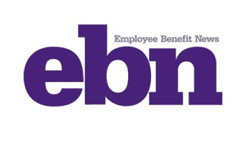
During carrier negotiations, employers naturally seek the lowest rate increase, while carriers typically propose a high increase. The fair and reasonable renewal rate increase lies somewhere in between.
Understanding what fair and reasonable is and achieving that rate on an ongoing basis can help you protect and maintain your organization’s financial health over the years, while continuing to offer your employees a consistent benefits plan.
What is a fair and reasonable renewal rate?
Each employer’s rate increase is unique to the utilization, plan design, claims history, current experience and other specific factors. There is no one fair and reasonable renewal rate. Rather, it’s a rate that allows you to continue to offer the same or equivalent benefits to your employees without experiencing a bigger-than-normal increase from year to year.
There’s a problem with negotiating too low.
Faced with a steep rate increase, it’s tempting to work with your broker and underwriter to negotiate aggressively to achieve a very low increase—or no increase at all—for your next plan year. But that could backfire when you’re offered a higher-than-normal increase the following year. What looks like a positive move turns out to be temporary because your plan is underpriced, forcing the insurance carrier to make up for the shortfall.
Even worse, if the plan is underpriced, the future year’s carrier negotiations could stall, creating a situation where the best and final offer is not as low as past years. This will force you to look at other carriers for benefits, with no guarantee they will be competitive. If a move to another carrier is needed, it creates work for your HR team and could disrupt your employees’ care if the network changes drastically.
On the other hand, a long-term carrier relationship yields benefits for you and your employees. One benefit to building a good carrier relationship is a better understanding of what’s normal and what’s not when it comes to claims utilization.
Carrier negotiations for a fair and reasonable renewal rate means the stakeholders get what they need.
A carrier that can view data over a number of years and confirm how your plan usually performs is more likely to be forgiving when you have a year with high claims. And no matter how healthy and educated your employees are or how well your plan typically runs, every employer will suffer catastrophic claims from time to time.
To get to a fair and reasonable renewal rate, start early.
Start several months before the end of your plan year. Roughly six months before your plan renews, work with your employee benefits broker and their internal underwriters to develop a pre-renewal analysis. Claims data can be used to predict the upcoming plan year costs.
This analysis will give you a chance to discuss benefits plan design adjustments to meet your budget goals and ensure your program meets the needs of your employees.
It can also help you in offering a data-backed counter rate increase, which is fair and reasonable for you, aiding in carrier negotiations.





